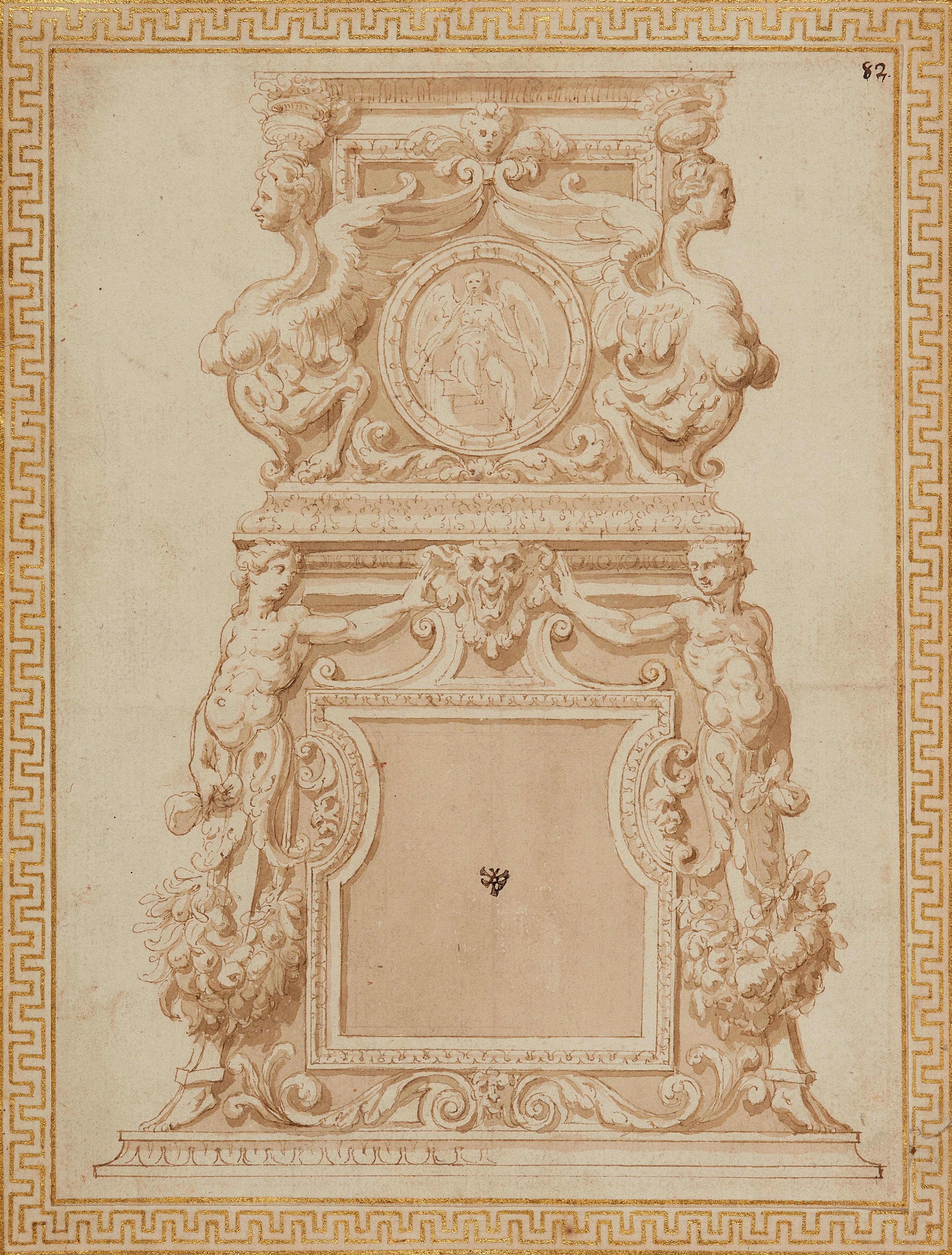Marco Marchetti
Study for a Monument
Pen and brown ink, wash. 24.8 x 19.3 cm.
The present sheet has a special provenance: the central mark refers to the collection of the English architect and antiquarian John Talman (1677-1726), a renowned collector of drawings and engravings. He was himself a prolific draughtsman and was the first director of the "Society of Antiquaries" in London from 1718 to 1726.
The drawings from the Talman collection often have a golden, complex frame that is unique to each sheet, framing each composition and enhancing the overall effect. Such frames were often executed by Talman himself.
The present study for a grotesque decoration was probably intended for a frontispiece and is inspired by the illustrations for Giorgio Vasari's first editions of his "Vite". The stylistic features of the present work point to the hand of Marco Marchetti da Faenza, one of Vasari's most important collaborators, who specialised in grotesque depictions.
The extremely long necks of the sphinx figures and the bizarre features of the masks are frequently found in the extensive repertoire used by Marco da Faenza in the period between his Florentine years and the painter's last stay in Rome (1572-1580), which he spent in the Vatican in the service of Pope Gregory XIII.
Inscribed in pencil verso lower left: "From Sir Robert Witt's collection / Xmas 1937"; also inscribed in pencil by another hand lower right: "Francesco Galli called Bibiena / 1659 - 1739 / Born Bologna [sic]. Architect to Phillipp V".
Provenance
John of William Talman, Hinxworth, England (L. 2462) – Sir Robert Witt, London – from 1937 with Ulrich A. Middeldorf, Florence – Private Collection, Florence.
Literature
Antony Griffiths u. Hugh Macandrew: The Talman Collection, marks and sales, in: The Volume of the Walpole Society LIX, 1997, S. 197 ("Italian, XVI c., Design for a pedestal").

